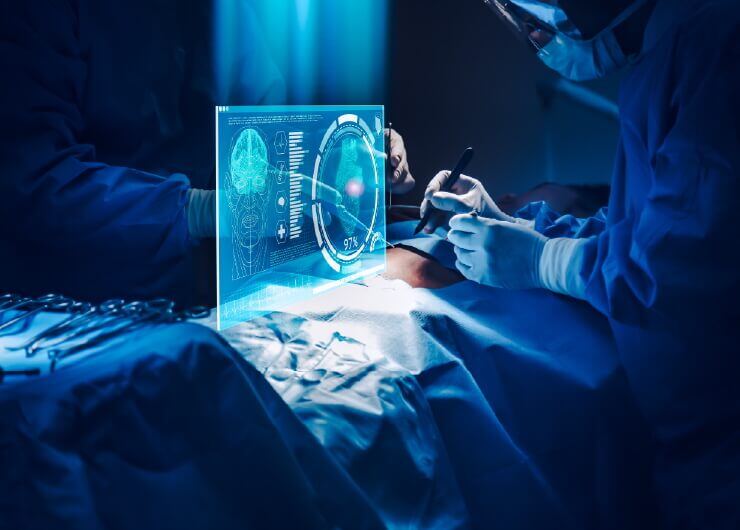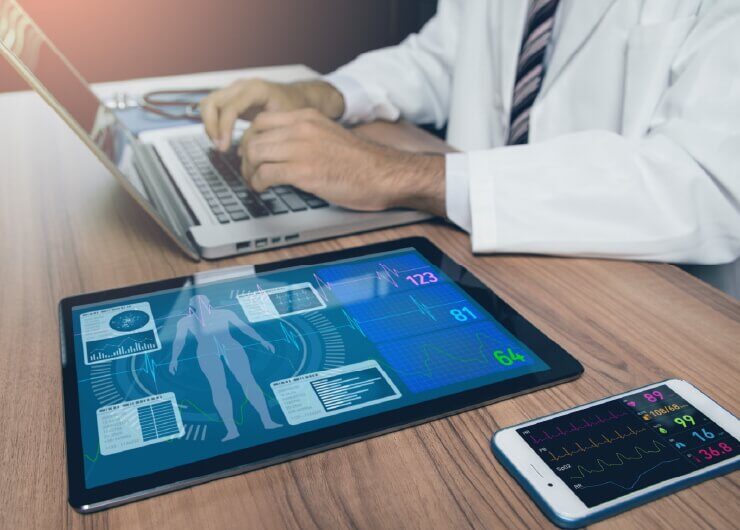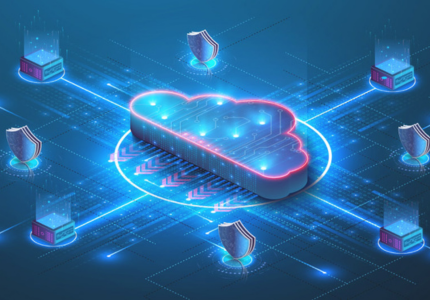Innovation is everywhere in the IoT, no more so than in healthcare. Life-changing applications enable connected ambulances, remote patient monitoring and vaccine transport, each of which improve health provision every day. At Mobile World Congress (MWC) 2025, impressive existing and future digital health examples were examined and discussed. What they all have in common is the need for resilience security and industry collaboration to turn theoretical impacts into real-world outcomes.
Three ways digital technology is transforming healthcare
Three awe-inspiring digital health strategies were discussed at MWC 2025:
Smart hospital
The future smart hospital can use augmented reality (AR) to shorten operations and recovery times for patients. One way is for surgeons to use AR to assess how a donor organ will fit into a recipient patient; they can also use it to navigate directly to tumours during operations. Digital technology can also enable surgeons in one part of the world to assist those in another to perform an operation in real-time.
IoT in healthcare
The IoT can transform healthcare for over 26 million people in the UK who have at least one long term health condition. These patients account for half of all GP appointments and 70% of hospital beds, so the healthcare need is acute. Health and social care providers can use the IoT to monitor patients remotely, tracking conditions such as diabetes, sleep apnoea and chronic obstructive pulmonary disease, as well as checking that patients have taken medication when they should. This technology-enabled remote care helps take pressure off health appointments and keep patients out of hospital.
Connected ambulances are another IoT use case. They can relay critical health data back to destination hospitals so clinicians there are better informed, and therefore better prepared, when patients arrive.
AI in healthcare
Artificial intelligence (AI) has potential in diagnostics and triage, helping health professionals move patients more swiftly to treatment stages. AI tools could shorten overall health journeys by capturing and analysing information efficiently to alleviate waiting times for patients and free up valuable human resources in healthcare.

What IoT connectivity can do for healthcare
IoT connectivity has an important role to play in digital solutions for the healthcare sector, connecting applications to help:
- Meet resource challenges
- Shorten care journeys
- Keep patients informed
- Improve care through information sharing.
Capacity is a huge problem in healthcare. The demand for appointments and hospital beds outstrips supply. The IoT can help free up capacity by equipping clinicians to monitor and support patients at home.
It can shorten care journeys by improving efficiency. One way is through tests at the bedside, with results scanned automatically to populate medical records, reducing the need for manual data entry. Improved workflows reduce patient time spent waiting for health data to be collected, sorted and analysed before they can start treatment or be discharged.
If patients don’t know what’s going on with their health, they’re more likely to become stressed and exacerbate any conditions. In the search for information, they reach out to GP surgeries and hospitals, adding to the burden of time-intensive communication. AI and the IoT have the potential to transform early detection of conditions through wearables and other personalised care devices that monitor and track health metrics such as breathing patterns, heart rhythms and blood glucose levels.
It is better for healthcare providers and patients if conditions can be predicted and detected—and interventions staged—as quickly as possible. This speed relies on information sharing from patient to healthcare professional, from ambulance to hospital and between departments. The IoT can help move data around, to get it where it needs to be quickly. This can improve care by giving clinicians the latest, up-to-date information to work from, averting the need to duplicate patient assessments and helping move them more swiftly to treatment.

What healthcare needs from the IoT
These impressive innovations support healthcare in delivering patient care efficiently and effectively but digitalisation doesn’t happen overnight. The sector needs support from the tech industry. After all, healthcare providers want solutions, not IT projects.
It is the role of the IoT solution provider to cut through the jargon, dispense with the tech talk and enable healthcare to capture, sort and analyse data for optimal patient outcomes.
At Wireless Logic, we recognise three priorities for IoT in healthcare:
Resilient networks
Healthcare applications are critical—providers can’t afford for them to be offline, therefore data exchange must be robust and reliable. The risk of outages can be reduced by a dedicated IoT service offering, multi-network resilience and a track record of high performance and reliability. eSIM adds to resilience with remote SIM provisioning that can assign, or switch, network profile whilst devices remain in place.
Security
In Wireless Logic research with Kaleido Intelligence, 90% of healthcare respondents reported pain points around cybersecurity threats and compliance challenges. Healthcare is crying out for robust IoT security—nearly four out of ten (39%) of those with cellular IoT expect connectivity providers to offer network threat detection and mitigation services. Organisations need an IoT security framework, as a model to assess security against, as they adopt digitisation. The framework should cover technology capabilities, standards and best practices to strengthen identity and authentication policies and defend, detect and react to cyber threats.
Industry collaboration
IoT solutions providers, connectivity providers and device manufacturers must collaborate to support healthcare as it gets to grips with its digital future. Fragmentation within the IoT adds to the complexity of getting started, to the benefit of no-one. Healthcare needs managed IoT connectivity that provides insights into deployed devices and the ability to effectively manage active connections. It needs the assurance it can rely on secure and resilient IoT connectivity.

This year’s MWC painted a picture of digital healthcare. AR, AI and the IoT can drive a future of efficient care operations, in-home patient care and shorter health journeys. For information on Wireless Logic’s IoT service offering, explore our solutions for SIM-based health and well-being applications, send us a message or call us on 0330 056 3300.






